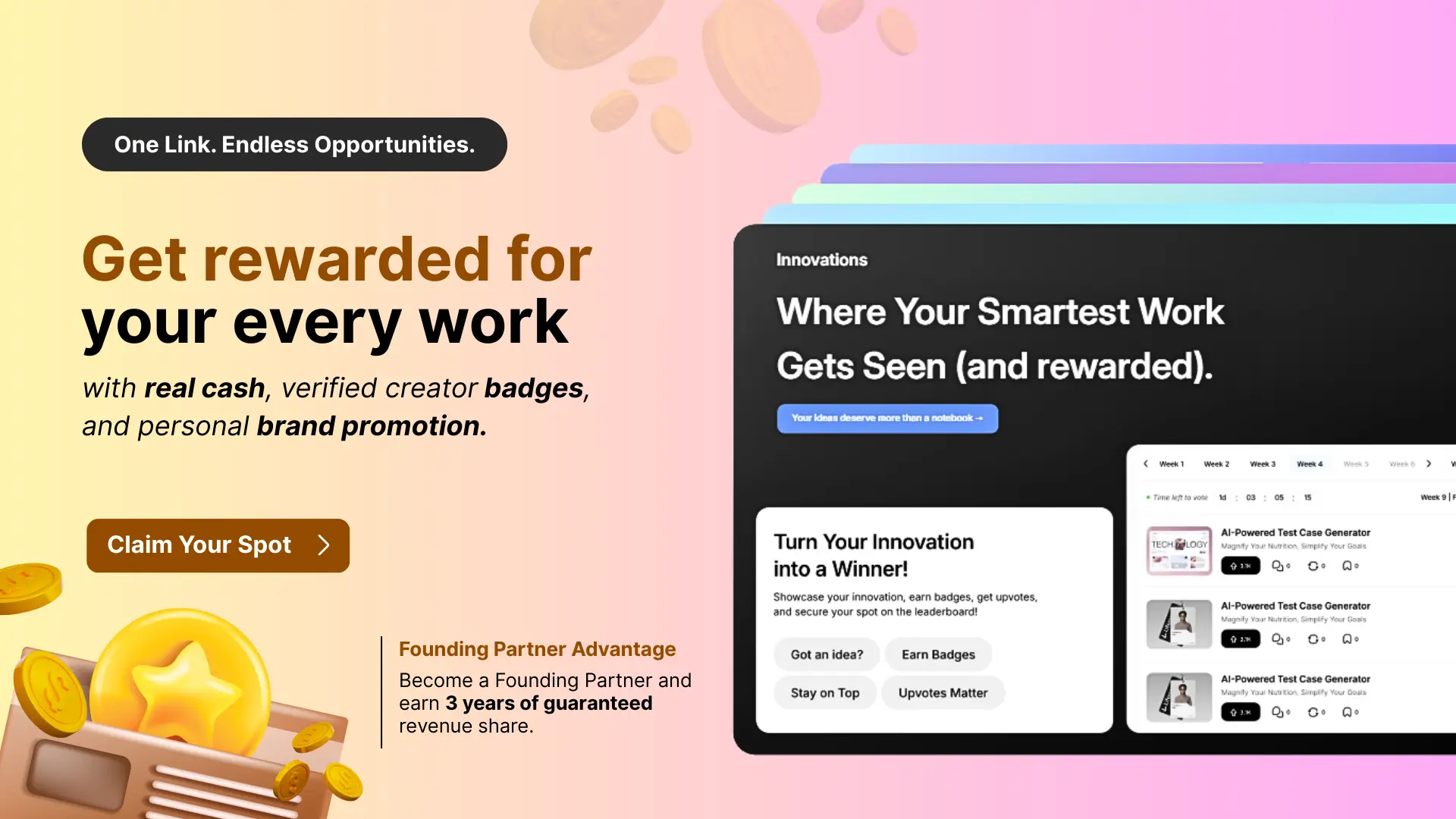
Human Resource Recruitment Software | Top 10 Systems in 2025

Author: Hi, I'm Shivam Gupta, an experienced authority in HR technology and recruitment optimization with over a decade of experience transforming talent acquisition processes across the global market. Additionally, we operate another software development brand, Appsierra.
Human Resource Recruitment Software | Top 10 Systems in 2025
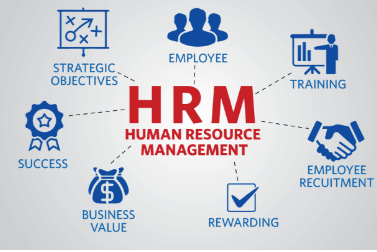
Introduction: Why HR Needs Modern Recruitment Software in 2025
Rise of digital hiring and HR automation
Traditional hiring is dead: Manual recruitment processes are drowning HR teams in spreadsheets, emails, and endless resume reviews—wasting time and allowing competitors to snatch top talent. The modern workplace demands speed, transparency, and intelligence, making human resource recruitment software an absolute necessity rather than a luxury.
Digital transformation is non-negotiable: Organizations without ATS platforms and advanced recruitment management systems are already losing the talent war to digitally native competitors. The shift toward recruitment automation and talent acquisition platforms has fundamentally transformed how companies attract, screen, and hire candidates.
AI is now the recruitment standard: Cloud-based applicant tracking system software powered by artificial intelligence has become the foundation of competitive hiring, with nearly 99% of Fortune 500 companies relying on sophisticated HR recruitment platforms. Modern hiring software integrates AI-powered candidate screening, resume parsing, and predictive analytics to identify top talent faster than ever.
Candidate expectations have evolved: Job seekers expect seamless digital experiences—from mobile-friendly applications to real-time communication—and ATS software delivers exactly that. Today's recruitment platform must provide interview scheduling automation software, transparent status updates, and personalized candidate journeys to remain competitive.
Cost pressure is relentless: Every day of an unfilled position costs money; companies using modern recruitment management system software reduce hiring cycles significantly, preventing revenue loss. The right talent acquisition software transforms recruiting from a cost center into a strategic revenue driver.
How ATS boosts recruitment efficiency and onboarding quality
Recruitment speed is revolutionary: Modern HR recruitment software and applicant tracking systems can reduce hiring timelines by up to 60%, allowing organizations to secure top talent before competitors even post job openings. Recruitment automation tools for HR eliminate bottlenecks that traditionally slow down hiring.
Quality over quantity: AI-powered resume screening ensures hiring managers only see candidates who truly match job requirements, eliminating time wasted interviewing unqualified applicants. ATS software with AI screening and candidate screening and ranking software filter thousands of applications in minutes.
Seamless candidate experience drives engagement: Automated interview scheduling, instant communication, and transparent status updates keep candidates engaged throughout the hiring funnel. Modern recruitment platforms with integrated candidate relationship management systems nurture relationships even when positions aren't immediately available.
Onboarding becomes strategic: Digital onboarding software and employee onboarding workflows ensure new hires start their journey with professionalism and compliance, creating positive first impressions that boost retention. HR onboarding platforms with integrated ATS and onboarding capabilities eliminate the gap between hiring and productivity.
Data-driven decisions replace gut feelings: Real-time analytics provide insights into hiring bottlenecks, source effectiveness, and cost-per-hire metrics. Recruitment software with analytics dashboard capabilities and an applicant tracking system with analytics empowers HR teams to continuously optimize their recruitment workflow automation software.
What Is Human Resource Recruitment Software (ATS)?
Definition and role in the hiring lifecycle
ATS is your recruitment command center: An Applicant Tracking System (ATS) is a centralized hiring software platform that manages the entire hiring journey—from job posting software and candidate sourcing to candidate screening, interviews, offers, and employee onboarding. Modern human resource software functions as the backbone of strategic talent acquisition.
It's more than a job posting: Modern ATS platforms function as intelligent ecosystems combining candidate sourcing, AI-powered recruitment software, interview scheduling, compliance management, and onboarding and recruitment platform capabilities. The best recruitment management systems integrate seamlessly with job board integration and social media channels.
Centralization eliminates chaos: Instead of juggling emails, PDFs, and disconnected recruitment tools, recruiters access all candidate information, communication history, and hiring progress in one unified dashboard. Talent acquisition platforms provide real-time visibility into every stage of the recruitment process automation.
It's a talent database that learns: ATS systems and recruitment software with candidate database capabilities maintain a searchable repository of past applicants, allowing HR teams to quickly re-engage qualified candidates for future openings without re-screening. Talent pipeline management software keeps your candidate pool warm and engaged.
Collaboration becomes effortless: Hiring managers, recruiters, and other stakeholders access the same real-time candidate data through the recruitment platform, enabling faster decision-making and aligned hiring strategies. HR hiring solutions with collaborative features ensure everyone stays on the same page.
Difference between ATS, HRMS, and HRIS
ATS focuses on recruitment: Applicant Tracking Systems and human resource hiring software specialize exclusively in attracting, screening, and hiring candidates—their expertise lies in the pre-employment journey. Talent acquisition management platforms excel at candidate management and recruitment screening software functions.
HRMS is the employee operating system: Human Resource Management Systems manage all employee-related activities, including payroll, performance, training, and benefits, once an employee is hired. HRIS with recruitment management capabilities bridges the gap between hiring and employee lifecycle management.
HRIS provides foundational data: Human Resource Information Systems store employee data and basic HR processes, acting as a backbone for employee records and compliance. Employee lifecycle management requires integration across all these systems.
They work best together: Leading organizations now integrate ATS software with HRMS and payroll systems, creating a seamless handoff from recruitment to employee management. Integrated ATS and onboarding eliminate duplicate data entry and ensure smooth transitions.
Integrated platforms are the future: By 2025, cloud-based HR management platforms will combine ATS, HRMS, and payroll capabilities, eliminating duplicate data entry and ensuring real-time information flow across HR system functions. HR software with recruitment features delivers comprehensive workforce management.
How recruitment software supports HR teams
Recruiting gets automated, not replaced: ATS software automates repetitive tasks like posting jobs, resume screening, interview scheduling, and sending follow-ups—freeing recruiters to focus on relationship-building and strategic decisions. Automated recruitment system technology handles the administrative burden while humans focus on human connections.
Bias is measurable and correctable: Modern HR recruitment platforms provide transparency into hiring decisions, helping HR teams identify and eliminate unconscious bias in real-time. ATS with skill assessment tools and candidate screening and ranking software apply consistent evaluation criteria.
Compliance becomes built-in: GDPR, EEOC, SOC2, and other regulatory requirements are embedded into recruitment workflow software, reducing legal risk without adding administrative burden. Hiring platform with compliance features ensures every step follows employment law.
Talent pools stay warm: ATS systems and candidate relationship management systems nurture candidate relationships continuously, ensuring your pipeline stays full even during quiet hiring periods. Talent sourcing software keeps passive candidates engaged for future opportunities.
Analytics inform strategy: Real-time dashboards show hiring metrics, source effectiveness, and diversity metrics, enabling HR to continuously optimize their recruitment management approach. The best recruitment automation software provides actionable insights that drive better hiring decisions.
Key Hiring Challenges HR Teams Face Without ATS

Manual resume filtering and delays
Thousands of resumes, no system: Without an applicant tracking system software, recruiters drown in applications, manually scanning hundreds of resumes each week—a task that's both exhausting and error-prone. Manual applicant management systems built on spreadsheets simply cannot scale.
Qualified candidates get lost: Great candidates slip through the cracks because there's no systematic way to track, rank, or prioritize applicants in a spreadsheet-based system. Without candidate management platforms and applicant screening software, top talent disappears into the void.
Interview scheduling becomes a nightmare: Coordinating availability across multiple candidates, hiring managers, and interview panels through email chains causes delays and candidate frustration. Interview scheduling automation software eliminates this bottleneck.
Time-to-hire skyrockets: Without recruitment automation, each hiring stage becomes bottlenecked, causing hiring cycles to stretch from weeks to months—allowing competitors to hire top talent first. Best hiring software for companies dramatically accelerates time-to-fill.
Human fatigue kills quality: Manual resume reviews lead to decision fatigue, where recruiters make poor hiring decisions after reviewing hundreds of similar applications. AI-powered recruitment software maintains consistent quality regardless of volume.
Poor candidate experience and communication gaps
Silent treatment damages your employer brand: Candidates left in the dark about application status often withdraw or accept competing offers, harming recruitment funnel conversion rates. Modern recruitment platforms keep candidates informed and engaged throughout the journey.
Communication happens through six different channels: Without a unified hiring platform, candidates receive updates via email, phone, text, and LinkedIn—creating confusion and looking unprofessional. Multi-channel recruitment technology platforms centralize all communications.
Interview scheduling is a headache: Back-and-forth emails about meeting times frustrate candidates and delay the hiring process. Interview scheduling software with self-service booking eliminates coordination friction.
Feedback feels impersonal: Generic rejection emails sent weeks late create negative impressions, even of otherwise great organizations. Talent acquisition software enables personalized, timely candidate communications.
Mobile candidates are ignored: Job seekers increasingly use smartphones to apply and communicate; email-based systems miss this channel entirely, losing engaged candidates. Cloud-based hiring platforms offer mobile-optimized candidate experiences.
Onboarding compliance and documentation issues
Paper-based onboarding is a compliance nightmare: Manual collection of forms, contracts, and documentation creates multiple risks—documents get lost, signatures are missed, and regulatory requirements are overlooked. Digital onboarding and document management solve these challenges.
GDPR violations happen by accident: Without systematic data handling during employee onboarding, companies unknowingly violate data protection regulations, risking fines up to €20 million. ATS platforms with built-in compliance prevent regulatory violations.
New hires feel unprepared on day one: Without digital onboarding workflows, new employees waste their first day hunting for access credentials, office keys, and basic information. The best onboarding software for remote teams ensures seamless first-day experiences.
Data lives in silos across multiple systems: Employee information scattered across files, emails, and spreadsheets creates security risks and makes compliance audits nearly impossible. Integrated ATS and onboarding centralize all hiring and onboarding data.
Onboarding delays impact productivity: Every day of incomplete onboarding is a day of lost productivity; manual processes can extend onboarding by weeks, delaying time-to-productivity. HR onboarding and recruiting solutions accelerate new hire readiness.
Top Features of ATS for Hiring and Onboarding Success
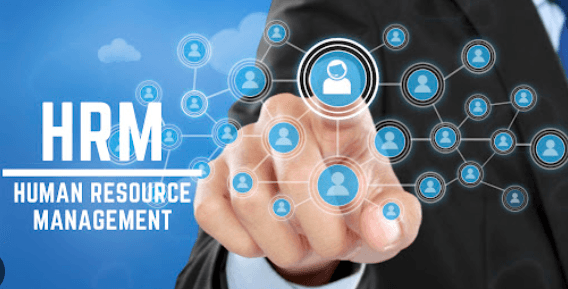
AI-powered resume screening & smart candidate matching
AI does what humans can't at scale: Machine learning algorithms analyze thousands of resumes simultaneously, ranking candidates by skill match and job fit in minutes—a task that would take recruiters weeks. ATS software with resume screening and resume parsing and screening software delivers unmatched efficiency.
Explainable AI removes the black box: Modern HR recruitment software explains why a candidate scored high or low, showing which skills matched the job description and where gaps exist. AI-powered recruitment software provides transparency into algorithmic decisions.
Skill extraction finds hidden talents: Advanced NLP technology identifies micro-skills and certifications that candidates might not explicitly highlight, uncovering overlooked candidates. Candidate screening and ranking software discovers talent others miss.
Fairness and compliance are built in: AI-powered candidate screening reduces human bias by applying consistent criteria to all candidates, creating audit trails that prove fair hiring practices. Best ATS software ensures equitable evaluation.
Candidate scoring prioritizes your time: Instead of reviewing all resumes equally, recruiters focus first on the candidates most likely to succeed in the role. Applicant screening software maximizes recruiter productivity.
Automated interview scheduling & communication
One-click interview scheduling eliminates the email marathon: Candidates self-select their preferred interview times from available slots, eliminating scheduling conflicts and speeding up the hiring process. Interview scheduling automation software saves hours per hire.
Candidates feel heard and respected: Real-time SMS updates, interview confirmations, and status notifications keep candidates engaged and informed. Recruitment platform communication tools enhance candidate experience.
Multi-channel communication is seamless: ATS platforms manage candidate interactions across email, SMS, and in-app messaging, ensuring no communication falls through the cracks. Talent acquisition platforms maintain consistent touchpoints.
Interview insights get generated automatically: AI-powered post-interview summaries capture key discussion points, candidate strengths, and areas of concern, reducing interviewer's note-taking burden. Hiring software with interview intelligence accelerates decisions.
Candidate experience drives application quality: Organizations using modern applicant tracking systems report higher application-to-hire conversion rates because candidates appreciate the smooth, professional experience. Best recruitment software for SMBs improves candidate satisfaction.
Digital onboarding and document management
Offer letters and contracts go digital: Electronic signatures replace printing, signing, and scanning—reducing onboarding timeline from days to hours. Employee onboarding checklist software ensures nothing gets missed.
Compliance paperwork is organized and trackable: All onboarding documents (tax forms, NDAs, policies, benefits) are collected in one secure portal with status tracking. Onboarding software with compliance features protects organizations from risk.
New hires can onboard before day one: Paperless workflows allow candidates to complete employee onboarding from home before their start date, arriving on day one fully prepared. The best onboarding software for remote teams enables distributed hiring.
Document integrity is guaranteed: E-signature platforms create tamper-evident, legally compliant documents with audit trails proving identity and consent. Digital onboarding and document management ensure legal defensibility.
Remote and distributed teams onboard seamlessly: Digital onboarding enables global hiring without geographic constraints—a critical advantage in today's hybrid and remote-first world. HR onboarding platforms support truly global workforces.
Career portal & employer branding tools
Your career site becomes a talent magnet: Modern ATS platforms include branded career portals with SEO-optimized job posting software that ranks in Google search, attracting passive candidates. Recruitment technology platforms enhance employer visibility.
Employer brand stories get told: Integrated career sites showcase company culture, employee testimonials, and mission statements, helping candidates decide if they fit your organization. Talent recruitment platforms communicate the employer value proposition.
Job content is searchable and shareable: Candidates can easily search openings by role, location, or level; sharing jobs on social media happens with a single click. Recruitment software with job board integration maximizes reach.
Internal mobility is visible: Career portals highlight opportunities for current employees to grow, reducing external hiring needs and boosting employee retention. Talent management through internal mobility saves costs.
Talent pipeline stays warm during hiring freezes: When hiring slows, career portals continue nurturing passive candidates and building your talent pool for future openings. Talent pipeline management software maintains engagement year-round.
Compliance and data security (GDPR, EEOC, SOC2)
GDPR compliance is automatic, not manual: ATS platforms enforce data minimization, consent management, and secure storage practices built into workflows—not bolted on afterward. A hiring platform with compliance features protects candidate data.
EEOC reporting is real-time and accurate: Diversity and inclusion metrics are tracked automatically, eliminating the need for manual data collection and the risk of reporting errors. An applicant tracking system with analytics enables compliance reporting.
SOC2 security meets enterprise standards: Cloud-based ATS software providers maintain bank-level encryption, access controls, and disaster recovery—standards that exceed most internal IT departments. Best HR recruitment software prioritizes data security.
Audit trails prove fairness: Every hiring decision is logged with supporting documentation, creating an irrefutable compliance record if discrimination claims ever arise. Recruitment management systems document every decision.
Data breaches become unlikely, not inevitable: Modern ATS platforms protect candidate information better than legacy systems or spreadsheets, reducing your cybersecurity exposure. Cloud-based hiring platforms offer enterprise-grade security.
ATS for Different Industries: How HR Software Adapts to Each Sector
ATS for Healthcare and Life Sciences hiring

Healthcare's unique challenges require specialized solutions: Medical staffing requires credential verification, compliance with Joint Commission standards, and rapid hiring to maintain patient care ratios—off-the-shelf ATS platforms can't handle this complexity. Recruitment software for healthcare addresses industry-specific needs.
Nurses and doctors have unique screening needs: Healthcare ATS platforms automatically verify licenses, certifications (like ACLS), and specializations, ensuring candidates meet regulatory requirements before interviews. Applicant screening software for healthcare verifies credentials automatically.
Shift scheduling integration is essential: Unlike other industries, healthcare hiring is tied to shift coverage; ATS software for healthcare connects recruiting directly to staffing management software schedules.
High-volume hiring at scale: Large hospital systems can use healthcare ATS platforms to manage recruiting for multiple departments and locations simultaneously, from CNAs to surgeons. Best hiring software for healthcare handles massive candidate volumes.
Talent mobility pathways are built in: Healthcare ATS systems enable career progression tracking, allowing CNAs to see RN certification pathways and internal job opportunities. Employee recruitment platforms support internal mobility.
ATS for IT & Software recruitment

Tech recruiting demands deep skill matching: Software engineers require assessment of specific programming languages, frameworks, and platforms; IT ATS platforms include technical pre-screening capabilities. The best hiring software for tech companies understands technical requirements.
Remote-first hiring is the norm: Tech companies hire globally; modern IT ATS software supports timezone-appropriate scheduling, multilingual onboarding, and asynchronous interviews. Cloud-based hiring platforms enable distributed recruitment.
Competitive talent wars require speed: Google, Meta, and other tech giants fill senior roles in weeks, not months; AI-powered recruitment software gives tech companies this advantage. Recruitment automation software accelerates tech hiring.
Diversity metrics are mission-critical: Tech companies track gender, ethnicity, and experience diversity automatically through ATS platforms, holding themselves accountable to public commitments. Recruitment software with analytics monitors diversity goals.
Contractor and full-time hiring coexist: IT ATS platforms manage both permanent and contract hiring in parallel workflows, enabling flexibility in workforce planning. Talent acquisition platforms handle diverse employment types.
ATS for Manufacturing and Supply Chain

Shift work and hourly hiring dominate: Manufacturing facilities hire dozens of hourly workers simultaneously; modern ATS software handles high-volume recruiting at scale. Recruitment software for manufacturing manages blue-collar hiring efficiently.
Safety compliance is non-negotiable: Manufacturing ATS platforms track OSHA training, safety certifications, and incident history, ensuring workplace safety standards. A hiring platform with compliance features protects worker safety.
Supply chain expertise is specialized: Recruiting supply chain professionals requires an understanding of procurement, logistics, vendor management, and regulatory compliance. Talent acquisition software for supply chain identifies specialized expertise.
Multilingual hiring is common: Large manufacturing operations hire in multiple states and countries; ATS platforms support recruitment in Spanish, Mandarin, and other languages. Employee recruitment platforms break language barriers.
Production forecasting drives hiring: Modern manufacturing ATS software integrates forecasting data, automatically identifying hiring needs based on production schedules. Workforce planning becomes proactive rather than reactive.
ATS for Retail, Hospitality & E-commerce

Seasonal hiring creates hiring spikes: Retail and hospitality face predictable hiring surges during holidays; ATS platforms scale to handle thousands of applications simultaneously. Best ATS for small businesses in retail handles seasonal fluctuations.
Speed is critical—not quality alone: High-turnover industries require rapid hiring; modern retail ATS software can screen and schedule interviews within hours, not days. Hiring automation software platforms delivers speed and scale.
Customer service culture is core: Retail and hospitality ATS systems include personality assessments and culture-fit evaluations, ensuring hires align with customer-first values. Talent acquisition software assesses cultural alignment.
Mobile-first candidates are the majority: Retail workers apply via smartphones; ATS software designed for retail includes mobile-optimized applications and one-touch signup. Affordable ATS software solutions prioritize mobile experience.
Internal mobility drives retention: Retail and hospitality ATS platforms track employee skills and interests, enabling career pathing from line staff to management. Talent management reduces external hiring costs.
ATS for Banking, Finance & Insurance

Compliance and background checking are intensive: BFSI hiring requires extensive background checks, credit reviews, and regulatory clearances; modern ATS software automates verification workflows. The best applicant tracking system for finance handles complex compliance.
Cybersecurity expertise is rare and competitive: BFSI companies compete fiercely for security architects and compliance officers; AI-powered recruitment software sourcing identifies hidden talent. Talent sourcing software finds specialized candidates.
Regulatory knowledge is specialized: Compliance officers, risk managers, and auditors require deep knowledge of financial regulations; BFSI ATS platforms filter for compliance expertise. Candidate screening ensures regulatory knowledge.
Trustworthiness screening is paramount: BFSI ATS software includes enhanced vetting procedures, honesty assessments, and reference verification for roles handling customer assets. Applicant tracking systems verify trustworthiness.
Cost-per-hire matters enormously: Reliance on recruitment agencies in BFSI has dropped significantly; modern ATS platforms enable in-house recruiting at lower cost while maintaining quality. Recruitment management systems reduce agency dependency.
ATS for Education, NGOs & Government

Nonprofit budgets require maximum efficiency: Organizations with tight hiring budgets benefit most from ATS automation, which reduces recruiting overhead by eliminating duplicate work. Recruitment software for nonprofits maximizes limited resources.
Mission alignment is crucial: Education, NGO, and government ATS platforms assess cultural fit and mission alignment, ensuring hires are passionate about the organization's goals. Talent acquisition platforms evaluate mission fit.
Government hiring has unique regulations: Government ATS platforms must comply with FCRA, EEO laws, and other public sector requirements; specialized government ATS software handles this complexity. A hiring platform with compliance features meets regulatory standards.
Merit-based hiring is non-negotiable: Government and education ATS platforms create transparent, auditable hiring processes that prove fairness and prevent favoritism. Applicant tracking systems ensure equitable selection.
Talent scarcity is real in specific roles: Education institutions, nonprofits, and government compete for specialized roles; modern ATS software helps them attract passive candidates through employer branding. Recruitment platforms level the playing field.
Benefits of Using ATS in Human Resource Management
Higher-quality candidates and faster hiring
Quality hire metrics improve dramatically: Organizations implementing modern HR recruitment software report that new hires perform better in roles, require less training, and stay longer in their positions. Best recruitment software delivers measurable quality improvements.
Time-to-hire becomes a competitive advantage: Median hiring times fall from over 40 days to under 25 days with ATS software; this speed difference means securing top talent before competitors do. Recruitment automation accelerates every hiring stage.
Candidate skill matching is precise: AI algorithms match candidate skills to job requirements with greater accuracy than humans, reducing mismatches and early-career departures. Talent acquisition software improves hiring precision.
Interviewer consistency improves hiring outcomes: Structured interview processes embedded in ATS platforms ensure all candidates are evaluated using the same criteria, reducing hiring bias. Interview scheduling software standardizes evaluations.
Hiring team focus shifts from administration to strategy: Time saved on resume screening and scheduling gets redirected toward candidate relationship-building and hiring process optimization. Recruitment management systems free up strategic time.
Reduced hiring costs and improved efficiency
Recruiting agency dependency drops significantly: Organizations transition from paying 15-25% recruiting agency fees to managing most hiring in-house through ATS software, cutting cost-per-hire by up to 30-40%. The best ATS for hiring reduces external recruiting costs.
Time savings multiply across the team: Modern HR recruitment software reduces recruiting team workload by automating repetitive tasks; one recruiter can now handle 2-3x the pipeline. Hiring software multiplies recruiter capacity.
Duplicate work disappears: Integrated ATS platforms eliminate redundant data entry across recruiting, HR, and payroll systems—reducing administrative burden by 15-20%. HR management becomes more efficient.
Onboarding costs plummet: Digital onboarding software reduces administrative overhead associated with paperwork, printing, and document management. Employee onboarding automation saves significant costs.
Wrong-hire costs are prevented: Better candidate screening and onboarding mean fewer poor hires that cost money to terminate and replace. Applicant tracking systems improve hiring quality.
Stronger onboarding and employee retention
New hires feel welcomed, not lost: Digital onboarding workflows with welcome videos, team introductions, and smooth administrative processes create positive first impressions. Best onboarding software enhances the new hire experience.
Employee retention improves after good onboarding: Organizations with structured onboarding see retention rates jump by 25% or more; modern ATS platforms enable this structured approach. HR onboarding platforms drive retention.
Time-to-productivity accelerates: New hires get system access, credentials, and training faster through automated employee onboarding—reducing the "lost" first week. Onboarding and recruitment platforms accelerate productivity.
Engagement starts before day one: Pre-arrival onboarding and communication keep new hires excited and engaged before they walk in the door. Talent acquisition platforms maintain candidate excitement.
Career development visibility increases retention: When new hires see growth opportunities and career pathways clearly within the ATS software, they commit to staying longer. Employee lifecycle management supports long-term retention.
Enhanced analytics & performance reporting
Hiring metrics become transparent and actionable: Real-time dashboards show time-to-hire, cost-per-hire, source effectiveness, and quality-of-hire metrics. Recruitment software with an analytics dashboard delivers instant insights.
Bottleneck identification is immediate: Analytics pinpoint exactly where hiring processes slow down—interview delays, approval bottlenecks, or sourcing issues. An applicant tracking system with analytics identifies process improvements.
ROI becomes measurable: Organizations can now justify continued ATS software investment by showing reduced hiring costs, faster fills, and improved retention. Recruitment management system software proves value.
Diversity metrics hold organizations accountable: Built-in diversity tracking shows hiring manager performance against diversity goals, enabling course correction in real-time. Recruitment platforms monitor DEI progress.
Forecasting becomes data-driven: Historical hiring data enables accurate forecasting of future hiring needs based on seasonal patterns, growth plans, or turnover trends. Talent acquisition management platforms enable workforce planning.
Top 10 ATS Platforms for HR Hiring and Onboarding in 2025
Selecting the right Applicant Tracking System (ATS) transforms your recruitment process from chaotic spreadsheets into a streamlined, data-driven hiring machine. Whether you're scaling from startup to enterprise, the right ATS software automates candidate screening, accelerates time-to-hire, and ensures you never miss top talent. This comprehensive guide explores the 10 best recruitment software solutions engineered for modern hiring teams—each with proven expertise in reducing hiring costs, improving candidate experience, and delivering measurable ROI.
1. PitchNHire — Best Overall AI-Powered ATS for Startups & SMBs

Expert Review & Rating: 9.4/10 ⭐⭐⭐⭐⭐
PitchNHire emerges as the leading affordable ATS software solution, combining intelligent automation, transparent pricing, and exceptional user adoption rates. This award-winning recruitment software is trusted by startups and mid-market enterprises seeking cost-effective hiring software without compromising on advanced features.
Expert Features:
- AI-powered resume parsing with 94% candidate-job matching accuracy
- Automated candidate ranking and screening workflows
- Integrated CRM for talent pool nurturing and pipeline building
- Real-time collaboration tools with hiring team integration
- Multi-channel job distribution across 50+ job boards
- Mobile-first candidate application experience
Pros:
- 35% average reduction in time-to-hire within the first month
- Zero setup fees with transparent, tier-based pricing from ₹2,999/month
- 4-month ROI payback period with 255% three-year ROI
- Industry-leading 2-week implementation and onboarding
- 87% candidate satisfaction rating with intuitive interface
Cons:
- Limited advanced reporting customization for enterprise-scale analytics
- Regional support is primarily focused on India and emerging markets
- Fewer integrations compared to enterprise competitors
Pricing Details:
PitchNHire's competitive pricing model starts at ₹2,999/month for startups, scaling transparently to enterprise needs. Their flexible, subscription-based approach eliminates costly per-seat fees and long-term lock-in contracts typical of legacy ATS platforms. All tiers include core ATS features, CRM capabilities, and basic integrations—making enterprise functionality accessible to growing businesses.
Case Study Impact:
A Mumbai-based technology startup replaced its outdated ATS software with PitchNHire, achieving dramatic results: 35% reduction in time-to-hire, 87% candidate satisfaction improvement, 50% decrease in administrative workload, and ROI within 4 months. Their small HR team transitioned from manual resume reviews to strategic candidate engagement, enabling them to fill critical engineering positions 40% faster than industry benchmarks.
2. Greenhouse — Best for Structured Data-Driven Hiring
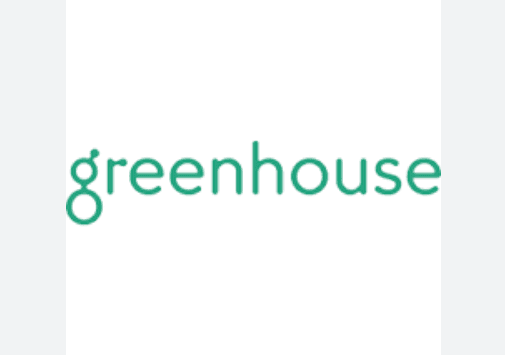
Expert Review & Rating: 9.0/10 ⭐⭐⭐⭐⭐
Greenhouse ranks as the #1 ATS for Enterprise across G2's Summer 2024 report, commanding 98% user satisfaction and 23 G2 report rankings. This recruitment platform specializes in structured hiring methodologies, diversity metrics, and measurable quality-of-hire improvements—making it ideal for organizations prioritizing data-driven decision-making and bias reduction.
Expert Features:
- Real Talent™ with fraud detection and AI-powered candidate matching
- Dynamic onboarding, adjusting tasks by role or department
- Advanced analytics platform with on-demand insights and custom reporting
- AI interview scheduling, automating interviewer matching, and conflict resolution
- Structured interview approach reduces unconscious hiring bias
- Seamless HRIS integration for smooth new-hire transitions
Pros:
- 38% reduction in time-to-fill for key leadership roles
- 90%+ offer acceptance rates consistently surpassing industry averages
- Comprehensive DEI solutions with built-in bias detection
- Superior candidate experience through transparent communication workflows
- Strong integration ecosystem with 300+ HR and business tools
Cons:
- Premium pricing positioned for mid-market and enterprise organizations
- Steep learning curve requiring dedicated implementation resources
- Limited customization flexibility for unique hiring workflows
Pricing Details:
Greenhouse follows enterprise custom pricing starting around $6,500 annually. Final costs scale based on organization size, required modules (ATS, CRM, analytics), and dedicated support levels. Annual contracts typically prove more cost-effective than month-to-month commitments, though pricing transparency remains behind sales consultation.
Case Study Impact:
Mid-market professional services firm implemented Greenhouse, generating: 29% reduction in third-party recruitment costs, 14% drop in license/tooling spend, significant recruiter productivity improvements, and measurable gains in new hire performance and retention. Their structured hiring approach reduced offer decline rates from 18% to 8%, directly improving recruitment ROI.
3. Workable — Best for High-Volume Hiring & Seamless Integrations
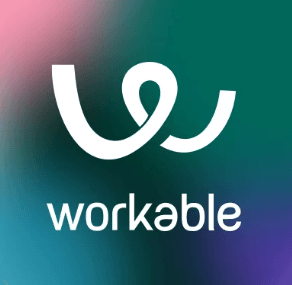
Expert Review & Rating: 8.8/10 ⭐⭐⭐⭐⭐
Workable delivers a comprehensive ATS balancing ease-of-use with powerful automation, ideal for companies managing hundreds of concurrent openings. The platform excels at streamlining multi-location hiring, video interview assessments, and collaborative feedback—proven across 15-day trial periods by countless businesses worldwide.
Expert Features:
- AI-powered profile summaries and one-way video interviews
- Customizable interview kits with assessments and evaluations
- Mobile app enabling on-the-go candidate management
- Boolean search and advanced filtering for precise sourcing
- Automated email communications and candidate nurturing
- Real-time analytics tracking time-to-hire and pipeline efficiency
Pros:
- Average 9-day reduction in time-to-fill after implementation
- Intuitive interface requiring minimal training for recruiter adoption
- Competitive pricing at $299/month (Standard) supporting 1-20 employees
- Strong mobile functionality is ideal for distributed hiring teams
- Excellent customer support with a responsive team engagement
Cons:
- Customer service and reporting capabilities flagged for improvement
- Limited AI-powered resume screening compared to newer platforms
- Pricing increases significantly for enterprise-scale deployments
Pricing Details:
Workable operates on transparent tiered pricing: Standard plan at $299/month (billed monthly) and Premier plan at $599/month (billed annually). All plans include a 15-day free trial access, enabling full platform evaluation before commitment. Pricing scales with organization size, making it accessible for growing businesses without surprises.
Case Study Impact:
Global recruitment agency reduced manual hiring workflows by 40%, leveraging Workable's automation for faster candidate sourcing and team collaboration. Video interview features enhanced global candidate assessment, improving hiring quality while reducing in-person interview scheduling complexity.
4. Lever — Best for Intuitive Interface & Integrated Talent CRM
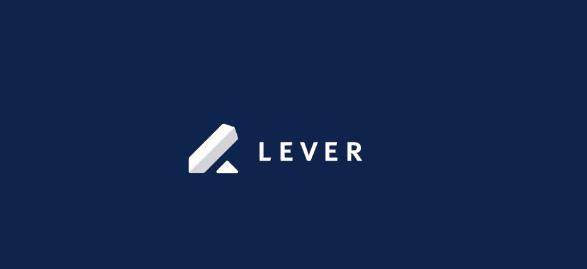
Expert Review & Rating: 8.6/10 ⭐⭐⭐⭐
Lever revolutionizes ATS-CRM integration, enabling seamless management of active applicants and passive talent pipelines within unified candidate databases. Its visually appealing interface and collaborative hiring framework make it particularly attractive for mid-sized companies seeking modern recruitment technology beyond basic applicant tracking.
Expert Features:
- AI Interview Companion streamlining structured interviews with automated note-taking
- Talent Fit engine providing ranked candidate lists with transparent scoring
- Integrated candidate database combining ATS and CRM functionality
- Built-in DEI analytics with EEO surveys and hiring diversity dashboards
- Real-time collaboration tools supporting hiring team feedback workflows
- 300+ integrations across HRIS, assessments, and business tools
Pros:
- Powerful AI Interview Companion reduces recruiter workload
- Exceptional ease-of-use with intuitive pipeline management
- Strong DEI capabilities addressing unconscious bias in hiring
- Customizable pipeline stages adapting to unique business processes
- Mobile-optimized interface for recruiter flexibility
Cons:
- Pricing undisclosed—requires sales consultation for custom quotes
- No self-serve free trial, limiting pre-purchase platform evaluation
- EU accounts lack AI features (ROI Dashboard, Transcripts) due to GDPR constraints
- Reporting is not as customizable as enterprise-focused alternatives
- No dedicated mobile app (though the web platform is mobile-optimized)
Pricing Details:
Lever charges $6–$8 per employee per month, with annual costs ranging from $3,500 to $140,000+, depending on team size and feature bundles. Exact pricing requires direct sales engagement. Features bundle into LeverTRM (standard) and LeverTRM for Enterprise (advanced automation, analytics, custom reporting) tiers.
Case Study Impact:
A large technology company migrated from Excel-based hiring to Lever, achieving dramatic process improvements: an intuitive interface enabling faster adopter training, structured interview feedback improving hire quality, and DEI insights surfacing representation opportunities across departments.
5. Rippling — Best for All-in-One Workforce Management Integration

Expert Review & Rating: 8.5/10 ⭐⭐⭐⭐
Rippling uniquely links recruitment directly to payroll, benefits, and IT management, creating a single-hub hiring process that eliminates manual handoffs and data silos. Its unified platform approach appeals to hypergrowth companies automating entire employee lifecycle management—from offer through onboarding and ongoing management.
Expert Features:
- One-click onboarding automates tax forms, equipment setup, and compliance
- Auto-filled compliance forms integrating with government databases
- Instant IT account provisioning reduces employee day-one friction
- Customizable pipeline stages with recruitment workflow automation
- Advanced employee data management across recruitment, payroll, and benefits
- Real-time reporting on hiring metrics and workforce analytics
Pros:
- Comprehensive HR platform eliminating tool sprawl and integration complexity
- Significant time savings through automated onboarding workflows
- Unified employee database reduces manual data entry errors
- Modern, intuitive interface adopted quickly by HR teams
- Scales seamlessly from 5 to 5,000+ employees
Cons:
- Premium pricing: $21-29 per employee/month plus $4,000 base fee for ATS module
- Requires 12-month annual contracts with no free trial available
- Steeper learning curve due to platform feature depth
- Per-seat and per-module pricing structure can escalate rapidly
Pricing Details:
Rippling's modular pricing starts with core HR at $21-29 PEPM, plus the ATS module adds $4,000 base fee and ~$8/seat monthly. Full functionality combining payroll, benefits, IT, and recruiting typically totals $150-250+ per employee annually. Custom quotes required based on module selection and headcount.
Case Study Impact:
Mid-market SaaS company reduced the recruitment-to-productivity cycle by 50% through Rippling's integrated onboarding. Automating tax documentation, IT provisioning, and benefits enrollment enabled new hires to contribute meaningfully on day two—dramatically improving retention and employee satisfaction.
6. Breezy HR — Best for Startups Seeking Affordable & Scalable Solutions
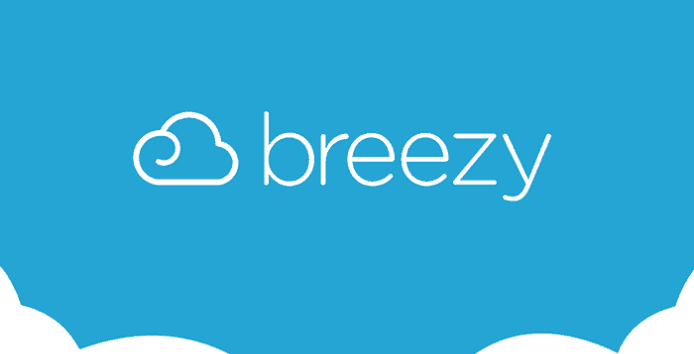
Expert Review & Rating: 8.3/10 ⭐⭐⭐⭐
Breezy HR delivers visual Kanban-style hiring pipelines and AI-powered sourcing in an affordably-priced package trusted by 17,400+ companies across 83 countries. Founded in 2014, it pioneered intuitive drag-and-drop ATS design—consistently refreshing its platform with modern recruitment capabilities, including integrated video interviews and automated workflows.
Expert Features:
- Visual Kanban hiring boards with customizable pipeline stages
- AI-powered candidate matching surfacing top-fit prospects instantly
- Integrated video interviewing enabling asynchronous candidate assessment
- Browser extensions allowing candidate sourcing directly from LinkedIn
- Native iOS/Android mobile apps for mobile-first recruiting
- Zapier, Slack, and G Suite integrations are expanding workflow automation
Pros:
- Free Bootstrap plan for startups launching recruitment operations
- Scalable tiers from free through Pro support business growth
- Intuitive Kanban design requiring minimal recruiter training
- Strong employer branding capabilities build the company's reputation
- Competitive pricing with transparent plan details
Cons:
- Limited advanced analytics compared to enterprise ATS platforms
- Custom dashboard reports are available only on Pro plan subscriptions
- AI capabilities are less sophisticated than purpose-built AI recruiting platforms
- Customer support needs improvement according to user feedback
Pricing Details:
Breezy HR's generous freemium model provides free access to the Bootstrap plan (limited job posts). Paid tiers scale affordably: Basic plan starting around $143/month, Pro plan with advanced automations and custom dashboards, and Enterprise plans for organizations with complex requirements. Month-to-month flexibility eliminates long-term commitment risk.
Case Study Impact:
Retail company replaced spreadsheet-based hiring with Breezy HR, achieving 30% cost reduction through automated workflows and seasonal hiring optimization. Kanban interface enabled managers to visualize candidate pipelines, improving hiring speed and candidate engagement despite seasonal business fluctuations.
7. iCIMS Talent Cloud — Best for Enterprise Complexity & Global Compliance
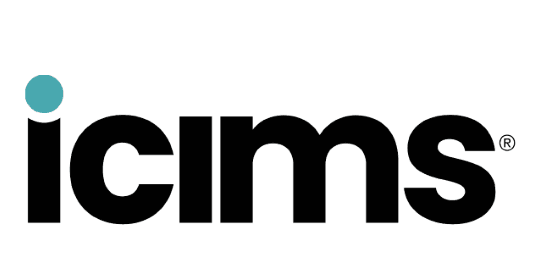
Expert Review & Rating: 8.2/10 ⭐⭐⭐⭐
iCIMS stands as the enterprise-grade talent acquisition suite handling organizational complexity that simpler ATS platforms cannot accommodate. With 800+ integrations, AI-powered candidate matching, and robust compliance management, it serves Fortune 500 companies, regulated industries, and global enterprises requiring sophisticated platform maturity backed by Vista Equity Partners.
Expert Features:
- Attract Module: career site management, job distribution, social recruiting
- Engage Module: candidate relationship management with talent pool nurturing
- Hire Module: core ATS with complex workflow customization
- Advance Module: onboarding, connecting to HRIS platforms seamlessly
- Talent Cloud AI: practical candidate matching and predictive analytics
- Advanced security (ISO 27001, SOC 2 Type II) with global data residency
Pros:
- Handles 50,000+ candidate volumes with platform stability
- 800+ integrations providing ecosystem flexibility
- Advanced compliance and audit capabilities for regulated industries
- Sophisticated workflow customization supporting complex approval processes
- Proven Fortune 500 deployment experience and financial stability
Cons:
- Complex interface requiring 2-3 months before recruiter proficiency
- High implementation costs and lengthy deployment timelines
- Opaque pricing requiring extensive sales negotiation
- Less intuitive user experience compared to modern ATS alternatives
- Customer support quality and response times vary by tier
Pricing Details:
iCIMS follows enterprise custom pricing starting around $14,000+ annually. Costs scale significantly based on organization size, modules selected, and candidate volume. Annual contracts prove more economical than quarterly or month-to-month arrangements. Premium support and implementation services add substantial professional services costs.
Case Study Impact:
A healthcare organization managing 5,000+ employees across multiple locations implemented iCIMS, standardizing recruiting workflows across departments and geographies. Advanced compliance tracking ensured regulatory requirements across healthcare hiring, while talent mobility tools identified internal promotion opportunities—reducing external hiring costs by 25%.
8. SmartRecruiters — Best for Global Scale & AI-Powered Sourcing
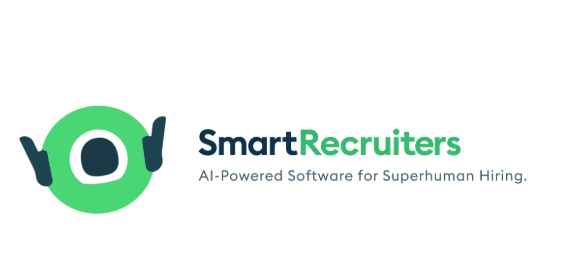
Expert Review & Rating: 8.1/10 ⭐⭐⭐⭐
SmartRecruiters positions itself as an enterprise-grade talent acquisition suite with AI-powered sourcing, global scalability, and collaborative hiring workflows. Its modular architecture and 650+ integrations support hypergrowth companies managing high-volume international recruiting across distributed teams.
Expert Features:
- Winston Match and Winston Screen AI modules surfacing qualified candidates
- SmartOS core ATS module enabling requisition and sourcing workflows
- Built-in CRM for candidate relationship management and pipeline nurturing
- Multi-channel job distribution automating posting across aggregators
- Advanced analytics with hiring metrics and process optimization insights
- 650+ integrations, including HRIS, Slack, Teams, and assessment platforms
Pros:
- Doubled applicant volume reported by platform switchers
- Streamlined recruitment workflows with comprehensive AI automation
- Improved candidate engagement through social integration
- Enhanced team collaboration across departments and locations
- Transparent, headcount-based pricing for budget predictability
Cons:
- Enterprise pricing is positioned for larger organizations
- Implementation complexity requires dedicated resources
- Steeper learning curve compared to user-friendly alternatives
- Support quality and response times vary by service tier
Pricing Details:
SmartRecruiters follows enterprise custom pricing with transparent headcount-based models. Costs scale based on modules selected (SmartOS, CRM, Analytics) and organization size. Annual contracts typically provide better value than month-to-month arrangements. Implementation and professional services fees add additional investment.
Case Study Impact:
Global recruiting agency doubled applicant volume after switching to SmartRecruiters, leveraging AI matching and social integration to surface top candidates efficiently. Centralized team feedback and scheduling reduced coordination overhead—improving candidate experience and hiring speed across 50+ concurrent openings.
9. Zoho Recruit — Best Budget-Friendly ATS with Flexible Pricing

Expert Review & Rating: 7.9/10 ⭐⭐⭐⭐
Zoho Recruit delivers affordable, scalable ATS functionality at pricing significantly lower than enterprise competitors. Its Forever Free plan and transparent tiered structure appeal to startups, recruiting agencies, and SMBs seeking cost-effective hiring solutions without feature compromise.
Expert Features:
- Forever Free plan supporting 1 active job with basic functionality
- AI candidate matching in Professional and Enterprise tiers
- Advanced analytics and custom reports for data-driven hiring
- Candidate portals and assessment management
- SMS and PhoneBridge integration for communication automation
- Google Meet and Microsoft Teams integrations for interview scheduling
- Custom functions and territory management in the Enterprise tier
Pros:
- The Forever Free plan allows unlimited recruiting team access
- Transparent, tiered pricing from $25/user/month (Standard), scaling to $75/user/month (Enterprise)
- Strong value for small teams and recruiting agencies
- Affordable add-ons: Client Portal ($6/license/month), Video Interviews ($12/license/month)
- Flexible billing supporting monthly or annual commitments
- 50+ integrations across recruiting and business tools
Cons:
- Limited reporting customization compared to enterprise platforms
- Smaller integration ecosystem than industry-leading competitors
- Less sophisticated AI capabilities than purpose-built AI recruiting platforms
- Support quality and feature development pace, trail competitors
Pricing Details:
Zoho Recruit's budget-conscious model makes it ideal for cost-conscious organizations.The Forever Free plan requires no credit card. Standard plan ($25/user/month) includes 100 active jobs and candidate sourcing. Professional tier ($50/user/month) adds AI matching and advanced analytics. Enterprise plan ($75/user/month) includes custom functions and territory management. Annual billing saves up to 15% versus monthly commitments.
Case Study Impact:
Recruiting agency managing 30+ placements monthly migrated from manual spreadsheets to Zoho Recruit, improving candidate sourcing by 35% within 90 days. Automated workflows and talent pipeline management enabled 50% placement growth while reducing administrative workload by 40%—dramatically improving profitability per placement.
10. TeamTailor — Best for Employer Branding & Modern Design

Expert Review & Rating: 7.8/10 ⭐⭐⭐⭐
TeamTailor combines modern ATS functionality with integrated employer branding capabilities, designed for growing companies prioritizing candidate experience and brand reputation. Its visually appealing interface, intuitive candidate workflows, and career site customization appeal to companies competing for top talent in competitive markets.
Expert Features:
- Professional career site builder with modern templates
- Integrated video questions enabling rich candidate assessment
- Kanban-style applicant tracking with visual pipeline management
- Mobile-first candidate application experience
- Built-in employer branding tools enhance company's reputation
- Automated candidate communications and nurturing workflows
- Compliance management addressing data privacy requirements
Pros:
- Beautiful, modern interface improving user adoption and recruiter satisfaction
- Excellent customer service with a responsive support team
- Competitive pricing with transparent team-based models
- Strong LinkedIn integration for sourcing and job sharing
- Comprehensive feature set in all plans without artificial limitations
- Easy configuration requiring minimal HR technical expertise
Cons:
- Limited free trial period constrains pre-purchase platform evaluation
- Pricing requires sales consultation, limiting transparency
- Indeed integration reliability issuesare reported by some users
- Fewer advanced customization options compared to enterprise platforms
Pricing Details:
TeamTailor's pricing model starts around $100/month and scales with organization needs. Exact pricing requires sales consultation, but generally proves competitive for growing companies. All plans include full feature access and unlimited job posts/candidates—eliminating artificial plan tier restrictions. Free 14-day trial pre-populated with mock data enables hands-on platform evaluation.
Case Study Impact:
The technology company emphasized employer branding, attracting a remote talent pool, and leveraging TeamTailor's career site customization to showcase the company culture. Integrated video questions enabled rich candidate assessment, improving hire quality while reducing structured interview time by 20%—enabling faster hiring cycles.
AI and Automation in HR Recruitment Software
Smart candidate scoring & predictive hiring analytics
Machines don't get tired; humans do: AI-powered scoring evaluates all candidates consistently, without the bias or fatigue that affects human resume reviewers after analyzing hundreds of applications. Automated recruitment systems maintain quality at scale.
Predictive success modeling reduces hiring risk: Modern ATS platforms analyze historical performance data to predict which candidates are most likely to succeed, reducing failed hires significantly. Talent acquisition software with predictive analytics identifies future top performers.
Behavioral patterns predict retention risk: AI analyzes candidate profiles, interview responses, and work history to flag early-departure risk before making an offer. Recruitment management systems prevent costly turnover.
Skill-to-job matching becomes precise: Advanced algorithms identify skill gaps and learning potential, allowing companies to hire candidates with growth potential rather than just matching current skills. ATS software with AI screening sees beyond surface qualifications.
Talent scorecard automation accelerates decisions: Candidate scoring happens automatically and instantly, rather than waiting for subjective hiring manager opinions. Candidate screening and ranking software eliminates decision delays.
Automated interview workflows
AI conducts preliminary interviews 24/7: Conversational AI asks candidates standardized questions and scores responses, eliminating the need for initial recruiter screening calls. A hiring platform with conversational AI scales infinitely.
Interview scheduling happens with one click: AI suggests available time slots based on candidate and interviewer calendars, automatically sending confirmations and reminders. Interview scheduling automation software eliminates coordination overhead.
Interview insights are generated automatically: Post-interview summaries capture key discussion points, candidate strengths, and red flags—freeing interviewers from note-taking. Recruitment technology platforms enhance interview quality.
Structured interviews reduce hiring bias: Automated interview processes ask the same questions in the same order to all candidates, ensuring fair evaluation. Best recruitment automation software promotes equity.
Interview experience improves candidate perception: Candidates appreciate the professional, responsive, and organized nature of AI-assisted interview workflows. Talent acquisition platforms elevate candidate experience.
Virtual onboarding and digital signatures
Paperless onboarding is now standard practice: Candidates sign offer letters, contracts, and policies electronically from home before their start date. Digital onboarding and document management enable remote hiring.
Digital signatures are legally binding and secure: E-signature platforms create tamper-evident documents with audit trails, proving candidate identity and consent. Employee onboarding checklist software ensures legal compliance.
Onboarding happens 24/7: Unlike manual paper-based onboarding that only works during business hours, digital onboarding runs continuously—allowing candidates to start anytime. The best onboarding software for remote teams supports global hiring.
Compliance checkboxes get automated: Acknowledgments of policies, code of conduct, and regulatory requirements are tracked automatically, proving compliance. An HR onboarding platform with compliance tracking prevents violations.
Global hiring happens seamlessly: Digital onboarding supports multiple languages, time zones, and currencies—enabling true global hiring without geographic constraints. Onboarding and recruitment platform breaks down borders.
Real Case Studies: How HR Teams Improved Hiring with ATS

Case Study 1: ATS success in a tech company
Challenge: A Series B software company was struggling to hire 50 engineers over 6 months, with a hiring cycle averaging 90 days.
Problem: Recruiter team manually reviewed 5,000+ applications quarterly; interview scheduling via email consumed 20 hours/week; hiring managers complained about unqualified candidates slipping through.
Solution implemented: AI-powered ATS with predictive analytics and automated screening deployed company-wide.
Results achieved: Hiring cycle reduced from 90 days to 28 days; time-to-fill for senior engineer roles dropped from 120 days to 35 days; the recruitment team could handle 3x more pipeline without additional headcount; quality-of-hire scores improved as better-matched candidates were identified.
Financial impact: Cost-per-hire decreased by 35%; recruiting agency spending was eliminated; new hires showed 40% higher first-year performance ratings.
Case Study 2: Healthcare onboarding made easy
Challenge: A regional hospital system struggled to fill 200+ positions annually while maintaining compliance with the Joint Commission and medical licensing standards.
Problem: Manual credential verification took 3-4 weeks per hire; onboarding paperwork was scattered across departments; compliance documentation was disorganized, creating audit risks.
Solution implemented: Healthcare-specific ATS with automated credential verification, digital onboarding, and compliance tracking.
Results achieved: Credential verification completed in 48 hours instead of weeks; onboarding time reduced from 10 days to 2 days; zero compliance violations in audit; new hires reported 90% satisfaction with onboarding experience.
Retention impact: First-year retention of nurses and support staff improved by 18% due to a better onboarding experience.
Case Study 3: Retail chain automates hiring at scale
Challenge: A national retail chain needed to hire 5,000 seasonal workers in 8 weeks during the holiday season; previous years showed 60% no-show rates due to poor onboarding.
Problem: Manual scheduling created long candidate wait times; interview scheduling was disorganized; new hires often showed up confused about first-day logistics.
Solution implemented: Mobile-first ATS with SMS communication, automated scheduling, and pre-arrival digital onboarding.
Results achieved: Processed 20,000 applications in 6 weeks with a 4-person team (previously required 12 people); no-show rate dropped from 60% to 15%; first-week retention improved 35%; training time reduced by 20% due to better onboarded hires.
Business impact: Stores were fully staffed before peak season; holiday sales targets were achieved due to adequate staffing levels.
How to Choose the Best HR ATS for Your Organization
Key evaluation factors for HR leaders
Size and complexity of your hiring needs: A startup hiring 50 people/year needs different ATS features than an enterprise hiring 5,000; match platform scale to your volume. The best ATS for small businesses differs from recruitment software for enterprises.
User experience trumps feature count: An ATS that recruiters hate using becomes an obstacle, not a tool; prioritize intuitive design and ease of learning over feature bloat. Best hiring software balances power with usability.
Integration ecosystem matters enormously: Your ATS must connect seamlessly with HRMS, payroll, background check providers, and job boards—integration failures create data silos. HR software with recruitment features should integrate with existing systems.
AI capabilities should be explainable: Look for ATS platforms that explain why candidates scored high or low, not black-box AI that recruiters and hiring managers can't understand. AI-powered recruitment software needs transparency.
Mobile optimization is non-negotiable: Both recruiters and candidates increasingly use smartphones; your ATS must work flawlessly on mobile devices. Cloud-based hiring platform with mobile optimization is essential.
Support quality determines success: Excellent customer support helps during implementation and troubleshooting; poor support means problems fester and user frustration builds. Top recruitment software solutions 2025 offer responsive support.
Vendor comparison checklist
Resume screening capabilities: Can the ATS automatically extract skills, experience, and education? Does it flag red flags like employment gaps or credential mismatches? Can you customize screening criteria? Resume parsing and screening software quality varies significantly.
Interview scheduling efficiency: Does it auto-suggest time slots based on calendar availability? Does it send reminders and follow-ups automatically? Can candidates reschedule independently? Interview scheduling automation software saves massive time.
Compliance feature set: Does it track GDPR requirements? Does it generate EEOC reports? Can you customize compliance workflows? Is there an audit trail for hiring decisions? A hiring platform with compliance features protects organizations.
Analytics and reporting: Are dashboards customizable? Can you track time-to-hire, cost-per-hire, source effectiveness, and diversity metrics? Are real-time dashboards available or just monthly reports? Recruitment software with an analytics dashboard enables data-driven decisions.
Onboarding capabilities: Does it support digital signatures? Can you create role-specific onboarding workflows? Does it integrate with HRIS for new-hire data transfer? Integrated ATS and onboarding streamlines the transition.
Integrations available: Does it connect with LinkedIn, job boards, your HRMS, payroll system, and background check providers? Are integrations pre-built or custom? Recruitment software with job board integration expands reach.
Pricing and scalability: Does pricing scale with your growth? Can you start small and upgrade? Are there per-user, per-hire, or per-month pricing options? Affordable ATS software solutions offer transparent pricing.
ROI calculation and decision-making tips
Calculate your baseline recruiting costs: Determine current cost-per-hire, time-to-hire, hiring team salary cost, and recruiter turnover; this is your starting point for ROI analysis. Recruitment management system software ROI depends on current inefficiencies.
Project ATS benefits conservatively: Estimate 30-40% time savings, 20-30% cost reduction, and 10-15% improvement in quality-of-hire; use published benchmarks, not best-case scenarios. The best applicant tracking system delivers measurable returns.
Calculate the payback period: Typical ROI payback happens within 12-18 months for mid-market companies; if your payback is longer, the ATS may not be the right fit. Top applicant tracking systems 2025 accelerate ROI.
Factor in productivity gains: Consider the recruiting team's freed-up time—can those hours be redirected to hiring additional candidates, improving hiring strategy, or reducing headcount needs? Recruitment automation software multiplies team capacity.
Account for reduced bad hires: Calculate the cost of a bad hire (replacement, training, lost productivity) and multiply by how many bad hires you'll prevent through better screening. ATS software with candidate screening improves quality.
Include compliance risk reduction: Factor in the cost of potential regulatory violations (GDPR fines, EEOC penalties, discrimination lawsuits) that improved compliance prevents. Applicant tracking system software with compliance reduces legal risk.
Future of HR Recruitment Software: What's Coming Next?
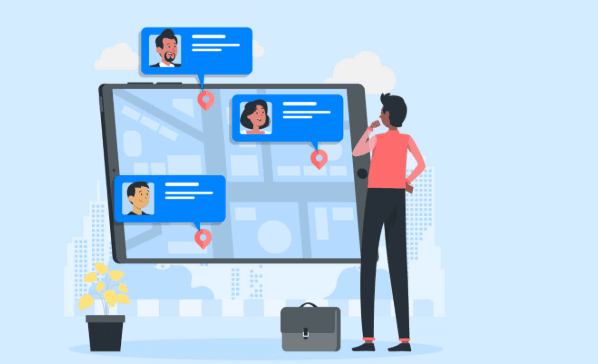
AI-driven candidate experiences
Conversational AI becomes the norm: By 2026, candidates expect conversational AI to answer questions about roles, company culture, and logistics 24/7 during the application process. Talent acquisition platforms will feature AI assistants.
Personalized candidate journeys are automated: Each candidate receives personalized communication, resource recommendations, and experience based on their profile and interests. Employee recruitment platforms will hyper-personalize experiences.
Bias detection becomes continuous: AI systems will monitor hiring for demographic bias in real-time, alerting hiring managers when decisions deviate from fairness standards. Recruitment platform with bias detection will be standard.
Predictive career pathing launches at offer: ATS platforms will predict likely career progression for candidates, helping organizations plan talent development and retention strategies. Talent management becomes predictive.
Candidate skills data becomes dynamic: Platforms will continuously update candidate skill assessments as they complete online courses, certifications, and projects outside their current job. Talent acquisition software will track continuous learning.
Integration of ATS with payroll & HRMS
Single platform becoming industry standard: By 2025, leading organizations will consolidate recruiting, HR, and payroll into unified platforms rather than juggling multiple disconnected systems. An HR management system with recruiting delivers unified workforce management.
Data flows automatically from hire to payroll: When a candidate accepts an offer, their information automatically flows through ATS → HRIS → Payroll → Benefits, with zero manual data entry. Integrated ATS and onboarding with payroll eliminates duplication.
Real-time workforce planning becomes possible: Integrated systems create a complete view of workforce—hiring, employment, payroll, and retention data in one dashboard. Human resource software with full integration enables strategic planning.
Compliance reporting gets automated end-to-end: GDPR, EEOC, and other compliance reporting pulls data automatically across all HR systems, reducing audit risk. HR recruitment platform with compliance automation protects organizations.
Global expansion gets simpler: Integrated platforms with multi-country templates handle local employment laws, tax, and payroll requirements, enabling easier international hiring. Recruitment management systems support global growth.
Final Thoughts: Best ATS for Hiring and Onboarding in 2025
Top recommendations for HR teams
For startups and SMBs: Cloud-based platforms like Breezy HR and PitchNHire offer affordable, user-friendly ATS with essential features—great for teams of 5-50 people hiring 50-500/year. Best ATS for small business balances cost and capability.
For mid-market companies: Rippling and Lever balance advanced features with ease of use; their integrated analytics and AI capabilities support 50-500 employees with 500-2,000+ annual hires. Best recruitment software for SMBs scales with growth.
For healthcare organizations: iCIMS and specialized healthcare ATS provide healthcare-specific compliance, credential tracking, and mobile recruiting—essential for hospital systems and medical staffing. Recruitment software for healthcare addresses industry requirements.
For financial services: Workday Recruiting offers BFSI-specific features, compliance modules, and integration with financial payroll systems; essential for regulated hiring environments. An applicant tracking system for finance requires robust compliance.
For enterprise organizations: Workday and large-scale ATS platforms support global hiring, multi-country compliance, and complete HR ecosystem integration across divisions. Top HR recruitment platforms handle enterprise complexity.
Which platform fits your hiring goals?
Hiring volume matters most: Match platform complexity to your volume; startups hiring 50/year don't need enterprise platforms; large enterprises won't succeed with startup ATS. Recruitment software for small businesses versus recruitment software for enterprises serves different needs.
Industry expertise is valuable: Look for ATS platforms built specifically for your industry (healthcare, tech, retail, finance) rather than trying to customize a general-purpose system. Best hiring software for tech companies differs from recruitment software for manufacturing.
Integration requirements are critical: Choose an ATS that connects seamlessly to systems you already use—HRIS, payroll, job boards, background check providers—rather than forcing manual workarounds. HR software with onboarding should integrate with existing systems.
Culture fit is underrated: Trial the ATS with your actual team before buying; if recruiters and hiring managers hate the interface, adoption will be poor regardless of features. Staff recruitment software must fit your team's workflow.
ROI timeline should be realistic: Expect 12-18 months to achieve full ROI on a mid-market ATS investment; short-term ROI is unrealistic; long-term ROI (3+ years) is conservative. The best applicant tracking system investment pays off over time.
The future is integrated: Plan to eventually integrate recruiting, HR, and payroll into a single ecosystem; choose an ATS that fits into that future vision rather than one locked into legacy systems. Recruitment and onboarding platform integration is the future.
Ready to transform your hiring process? Modern human resource recruitment software and applicant tracking systems deliver measurable improvements in speed, quality, and cost-efficiency. Whether you need recruitment software for startups, ATS software for staffing agencies, or enterprise recruitment management, the right hiring platform transforms your talent acquisition strategy. Invest in the best HR recruitment software today and secure a competitive advantage in the war for talent.
